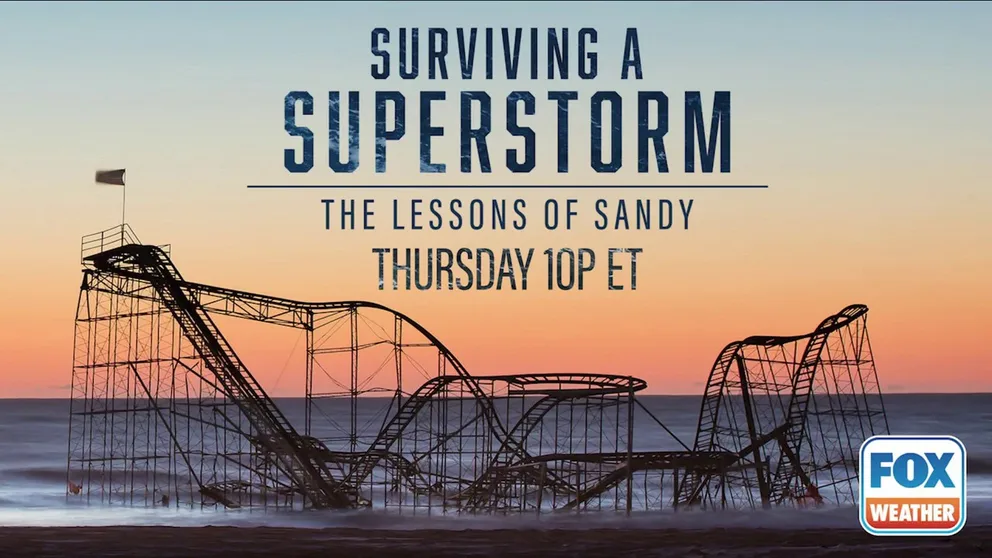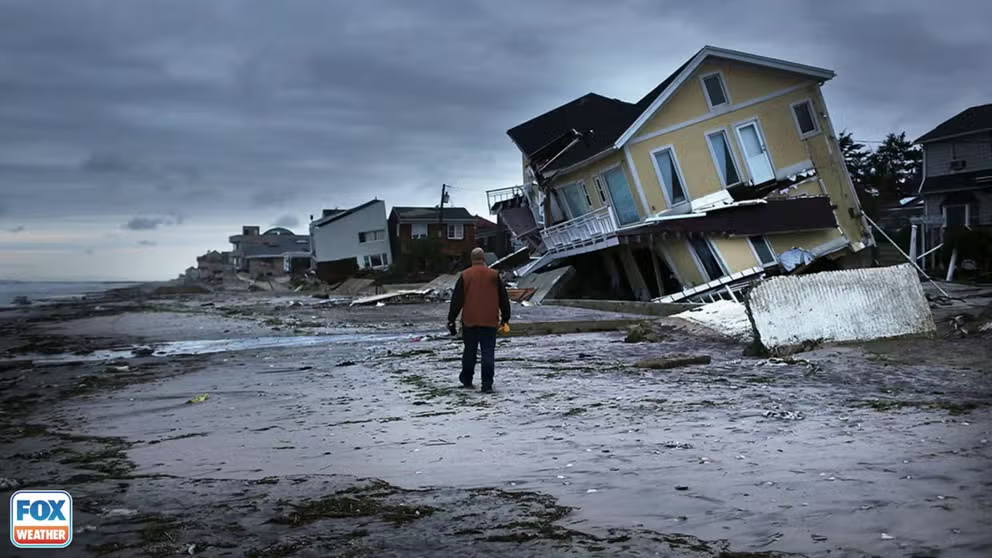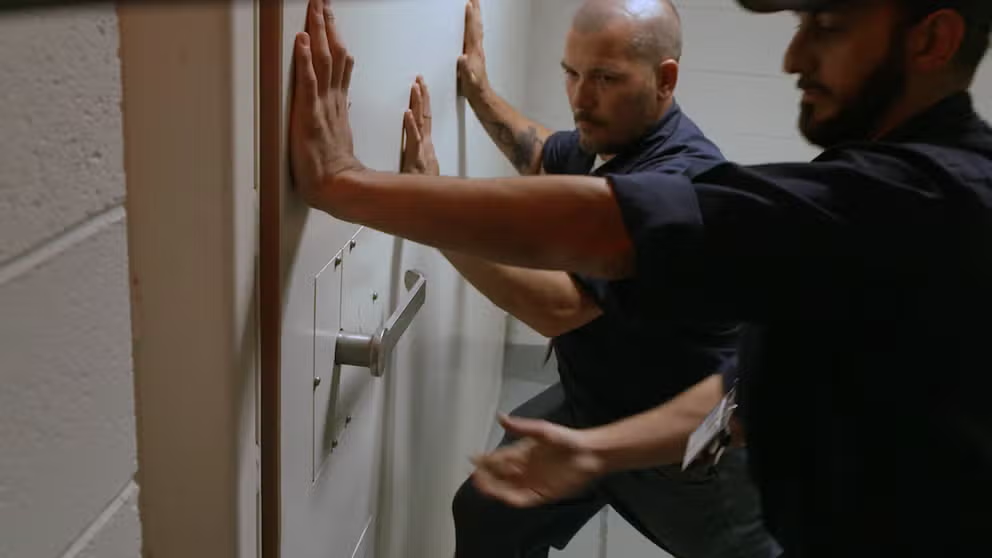New Superstorm Sandy documentary shows how cities innovated and rebuilt after the catastrophic weather event
In the FOX Weather documentary "Surviving a Superstorm: The Lessons of Sandy," FOX Weather meteorologist Amy Freeze speaks to survivors and city officials in New York and New Jersey about the lessons they learned from the catastrophic weather event.
'Surviving a Superstorm: The Lessons of Sandy' premieres Thursday at 10 p.m. ET
In the FOX Weather documentary
Superstorm Sandy struck the northeast in October 2012, with its core hitting the New York tri-state area and the Jersey coast with record-breaking storm surge and wind gusts.
In the FOX Weather documentary "Surviving a Superstorm: The Lessons of Sandy," FOX Weather meteorologist Amy Freeze speaks to survivors and city officials in New York and New Jersey about the lessons they learned from the catastrophic weather event.
The documentary airs Saturday and Sunday at 8 p.m. ET and 11 p.m. ET on FOX Weather.
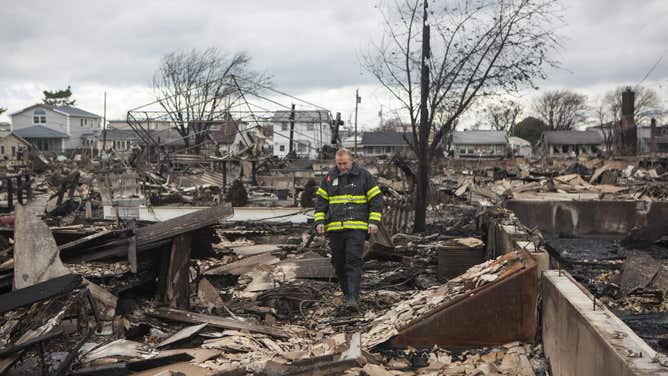
Superstorm Sandy wiped out many homes in NYC's Breezy Point borough with both water and fire.
(Robert Nickelsberg / Getty Images)
From hospitals to homes and from roller coasters to the country’s largest subway system, many aspects of life in the northeast were changed after Sandy hit.
For example, Freeze highlights how the NYU Langone Health - Tisch Hospital in New York City saw its lower levels flooded and its power source taken out by storm surge when Sandy struck.
After the storm passed, the hospital invested in flood-prevention measures, such as perimeter and interior flood barriers they can lower and raise. They also built their own energy source and positioned it many floors above the ground should flooding occur once again.
Superstorm Sandy (2012)
Superstorm Sandy was an entirely different storm when its effects were felt in New England.
Freeze also takes viewers to the Breezy Point neighborhood in New York City to hear from storm survivors.
Homes in Breezy Point were flooded by storm surge, with many washed off of their foundations. As dangerous as the water was, fires also swept through the neighborhood, as Sandy’s storm surge caused natural gas leaks and powerful winds carried flames from home to home.
Because of the extent of the damages, the neighborhood took 3-4 years to rebuild. New regulations, such as building homes above the high watermark, were implemented.
While the new regulations help ensure the safety of those living in the neighborhood, the neighborhood itself has changed.
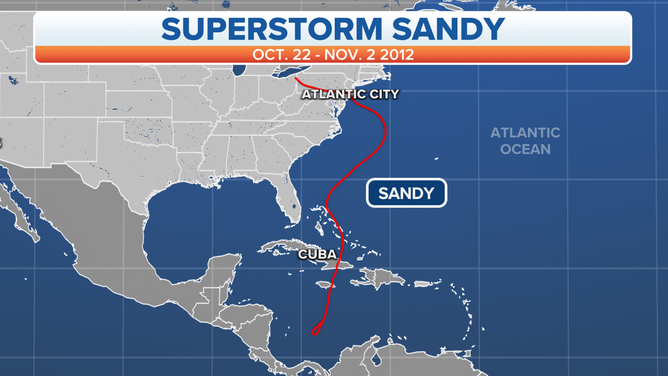
The track of Hurricane Sandy, Oct. 22-Nov. 2, 2012.
(FOX Weather)
In one of the most visible changes, the U.S. Army Corps of Engineers made the surrounding sand dunes higher and more robust to serve as protective barriers against the sea. However, that safety measure came with an aesthetic cost – homes that once had ocean views now have their views blocked by sand dunes.
In addition to New York, "Surviving a Superstorm: The Lessons of Sandy" also takes viewers to New Jersey, where FOX Weather multimedia journalist Katie Byrne speaks to storm survivors and emergency management officials in the coastal borough of Mantoloking.
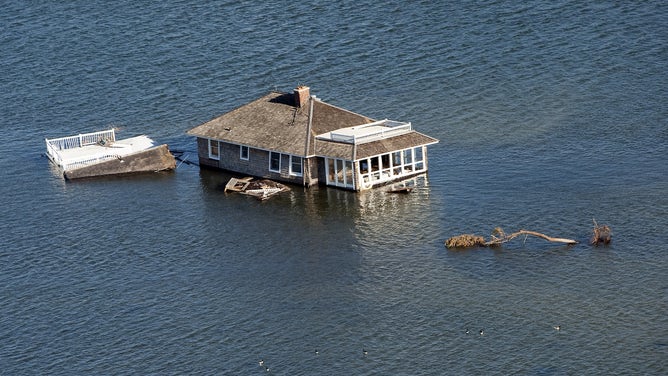
Aerial views of a house that was moved off its foundation and sits in the middle of the bay near Mantaloking, New Jersey after Superstorm Sandy hit.
(Debra L Rothenberg / Getty Images)
Much like Breezy Point, Mantoloking lost many homes that have now been rebuilt with new regulations, such as all the first floors of homes being raised at least 9 feet and 2 inches above the ground. Unfortunately, not all Mantoloking residents could rebuild their homes, as was the case for storm survivor Michael Graichen, who had no flood insurance.
In addition to homes and hospitals, Sandy also changed the engineering landscape for a beloved site in New Jersey: the Casino Pier amusement park in the coastal city of Seaside Heights.
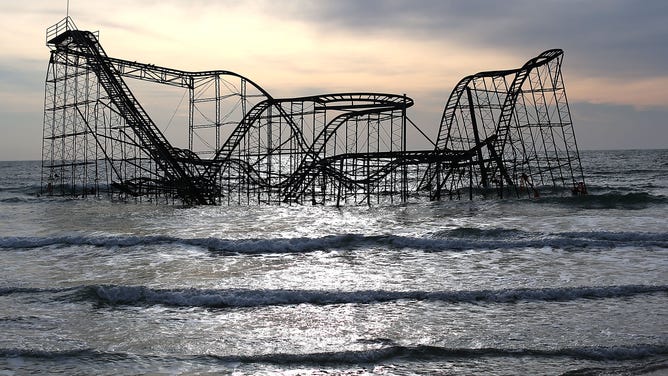
The Star Jet roller coaster remains in the water after the Casino Pier it sat on collapsed from the forces of Superstorm Sandy.
(Mark Wilson / Getty Images)
Sandy took out a large portion of the pier, causing one of the amusement’s roller coasters to fall into the sea. The pier has since been rebuilt, with a steel wall underneath, but without any roller coasters placed above the water. To add a little levity to the story, the Casino Pier amusement park added a new ride after Sandy hit – and they call it the "Super Storm."
In "Surviving a Superstorm: The Lessons of Sandy," Freeze takes viewers back to New York City, where large-scale infrastructure changes were made after the storm came through and caused the East River to flood the city.
Some of those changes include a $1.4 billion project to build a flood wall against the East River and raise a nearby park 9 feet high. The city also invested $7.6 billion into flood mitigation for the subway system, building flood gates and reinforcing eight train tunnels.
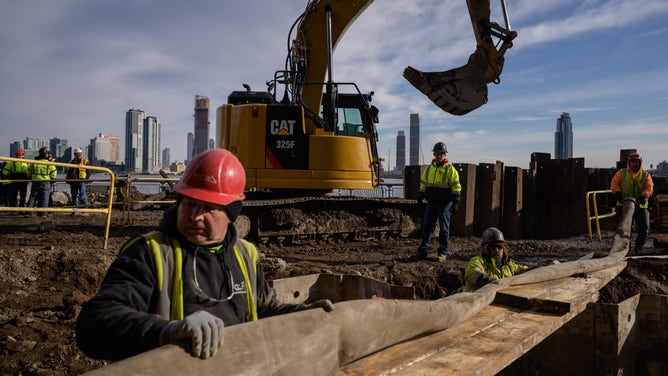
A general view shows construction workers at the site of a flood defense project on the east side of Manhattan, New York City.
(ED JONES / AFP / Getty Images)
"You can never be prepared enough for these types of weather events," said Zach Iscol, Commissioner for Emergency Management for NYC.
By reflecting on what happened in 2012, officials and residents in New York and New Jersey have learned lessons on how to protect their residents should a storm as powerful as Sandy strike in the future.
Learn more about Superstorm Sandy by watching "Surviving a Superstorm: The Lessons of Sandy" on Saturday and Sunday at 8 p.m. EDT and 11 p.m. EDT on FOX Weather.
How one hospital transformed into a hurricane-proof fortress after Sandy
In this ‘Surviving a Superstorm: The Lessons of Sandy' clip, FOX Weather’s Amy Freeze visits NYU Tisch Hospital to see how Superstorm Sandy transformed the facility.
